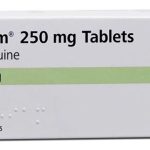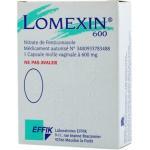
The detailed description of Lariam: medical conditions treated by the medicine, mefloquine side effects, mefloquine toxicity, dosages, application ways.

Lomexin is a drug applied in gynecological and dermatological praxis to treat a wide spectrum of fungal infections both intravaginal and those affecting external genitals. The medication can also be applied to other infected areas of the skin. It contains Fenticonazole nitrate as an active component.